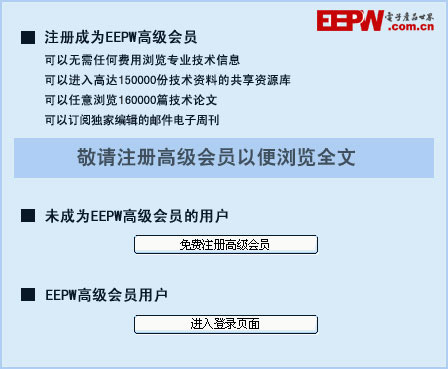ARM學習筆記--初識uC/OS(一)
int main(void)
{
INT8U os_err;//OS error
Bsp_init();//Embedded development board Initialization//開發板初始化
OSInit();//uC/OS initialization//系統初始化
os_err = OSTaskCreateExt((void (*)(void *)) App_Task_LCD,//創建任務
(void * ) 0,
(OS_STK * )&App_TaskLCDStk[APP_TASK_LCD_STK_SIZE-1],
(INT8U ) APP_TASK_LCD_PRIO,
(INT16U ) APP_TASK_LCD_PRIO,
(OS_STK * )&App_TaskLCDStk[0],
(INT32U ) APP_TASK_LCD_STK_SIZE,
(void * ) 0,
(INT16U )(OS_TASK_OPT_STK_CLR | OS_TASK_OPT_STK_CHK));
OSStart(); //uC/OS start multitasking//開始任務運行
}
/*
*********************************************************************************************************
* INITIALIZATION
* 初始化
*
* Description: This function is used to initialize the internals of uC/OS-II and MUST be called prior to
* creating any uC/OS-II object and, prior to calling OSStart().
× 描述:該函數用于uC/OS-II系統的內部初始化,它必須在調用uC/OS-II系統的任何創建對象之前,也必須在
* 函數OSStart()之前執行。也就是說使用uC/OS-II系統的第一步就是執行這個函數,這是一個約定。
*
* Arguments : none
× 傳參 : 無
*
* Returns : none
× 返回值 : 無
*********************************************************************************************************
*/
void OSInit (void)
{
OSInitHookBegin(); /* Call port specific initialization code */
OS_InitMisc(); /* Initialize miscellaneous variables */
OS_InitRdyList(); /* Initialize the Ready List */
OS_InitTCBList(); /* Initialize the free list of OS_TCBs */
OS_InitEventList(); /* Initialize the free list of OS_EVENTs */
#if (OS_FLAG_EN > 0) && (OS_MAX_FLAGS > 0)
OS_FlagInit(); /* Initialize the event flag structures */
#endif
#if (OS_MEM_EN > 0) && (OS_MAX_MEM_PART > 0)
OS_MemInit(); /* Initialize the memory manager */
#endif
#if (OS_Q_EN > 0) && (OS_MAX_QS > 0)
OS_QInit(); /* Initialize the message queue structures */
#endif
OS_InitTaskIdle(); /* Create the Idle Task */
#if OS_TASK_STAT_EN > 0
OS_InitTaskStat(); /* Create the Statistic Task */
#endif
#if OS_TMR_EN > 0
OSTmr_Init(); /* Initialize the Timer Manager */
#endif
OSInitHookEnd(); /* Call port specific init. code */
#if OS_DEBUG_EN > 0
OSDebugInit();
#endif
}
/*
*********************************************************************************************************
* CREATE A TASK (Extended Version)
* 創建任務(擴展版本)
*
* Description: This function is used to have uC/OS-II manage the execution of a task. Tasks can either
* be created prior to the start of multitasking or by a running task. A task cannot be
* created by an ISR. This function is similar to OSTaskCreate() except that it allows
* additional information about a task to be specified.
* 描述: 該函數用于創建一個 uC/OS-II管理的可執行任務.它不是在多個任務執行前被創建就是在一個運行
* 的任務中被創建.在中斷服務函數中不能創建任務(也就是說在ISR中不能調用該函數). 除了該函數允許一
*個任務的附加信息被列出外,該函數類同于函數OSTaskCreate().
*
* Arguments : task is a pointer to the tasks code
*
* p_arg is a pointer to an optional data area which can be used to pass parameters to
* the task when the task first executes. Where the task is concerned it thinks
* it was invoked and passed the argument p_arg as follows:
*
* void Task (void *p_arg)
* {
* for (;;) {
* Task code;
* }
* }
*
* ptos is a pointer to the tasks top of stack. If the configuration constant
* OS_STK_GROWTH is set to 1, the stack is assumed to grow downward (i.e. from high
* memory to low memory). ptos will thus point to the highest (valid) memory
* location of the stack. If OS_STK_GROWTH is set to 0, ptos will point to the
* lowest memory location of the stack and the stack will grow with increasing
* memory locations. ptos MUST point to a valid free data item.
*
* prio is the tasks priority. A unique priority MUST be assigned to each task and the
* lower the number, the higher the priority.
*
* id is the tasks ID (0..65535)
*
* pbos is a pointer to the tasks bottom of stack. If the configuration constant
* OS_STK_GROWTH is set to 1, the stack is assumed to grow downward (i.e. from high
* memory to low memory). pbos will thus point to the LOWEST (valid) memory
* location of the stack. If OS_STK_GROWTH is set to 0, pbos will point to the
* HIGHEST memory location of the stack and the stack will grow with increasing
* memory locations. pbos MUST point to a valid free data item.
*
* stk_size is the size of the stack in number of elements. If OS_STK is set to INT8U,
* stk_size corresponds to the number of bytes available. If OS_STK is set to
* INT16U, stk_size contains the number of 16-bit entries available. Finally, if
* OS_STK is set to INT32U, stk_size contains the number of 32-bit entries
* available on the stack.
*
* pext is a pointer to a user supplied memory location which is used as a TCB extension.
* For example, this user memory can hold the contents of floating-point registers
* during a context switch, the time each task takes to execute, the number of times
* the task has been switched-in, etc.
*
* opt contains additional information (or options) about the behavior of the task. The
* LOWER 8-bits are reserved by uC/OS-II while the upper 8 bits can be application
* specific. See OS_TASK_OPT_??? in uCOS-II.H. Current choices are:
*
* OS_TASK_OPT_STK_CHK Stack checking to be allowed for the task
* OS_TASK_OPT_STK_CLR Clear the stack when the task is created
* OS_TASK_OPT_SAVE_FP If the CPU has floating-point registers, save them
* during a context switch.
* 傳參:task 任務代碼的一個指針(指向任務代碼段)
*
* p_arg 當task第一次運行時,它代表指向一個用于向task傳遞參數的可選數據區域的指針.當task
* 在連接數據的時候,它被要求和像下面的例子這樣傳遞參數p_arg :
*
* void Task (void *p_arg)
* {
* for (;;) {
* Task code;
* }
* }
*
* ptos 任務棧頂指針.假如OS_STK_GROWTH設置為1,則棧被認為是向低地址推移的(即從高存儲到低
* 存儲位置).棧頂指針將指向棧所在的存儲器的最高位置.假如OS_STK_GROWTH設置為0,則棧被
* 認為是向高地址推移的(即從低存儲到高存儲位置).棧頂指針隨內存增加增加. ptos一定指向
* 一個可用的空閑的數據項.
*
* prio 任務的優先級. 每個任務都必須有一個唯一的優先級.優先級數字越小,優先級別越高.
*
* id 任務的ID號(0..65535)
*
* pbos 任務的棧底指針. 假如OS_STK_GROWTH設置為1,則棧被認為是向低地址推移的(即從高存儲到低
* 存儲位置).棧底指針將指向棧所在的存儲器的最低位置.假如OS_STK_GROWTH設置為0,則棧被
* 認為是向高地址推移的(即從低存儲到高存儲位置).棧底指針隨內存增加增加. ptos一定指向
* 一個可用的空閑的數據項.
*
* stk_size 棧的長度.如果OS_STK設置為INT8U,stk_size則為字節數允許.若OS_STK設置為INT16U,stk_size則為十
* 六位數允許.最后若OS_STK設置為INT32U,stk_size則為32位二進制允許.(指明棧的寬度)
*
* pext 是一個指針,指向用戶提供的用于TCB擴展部分的內存空間. 例如:通過上下文切換用戶存儲器能
* 保持住浮點寄存器的內容、每次任務運行的時間、任務被開關的次數等等.
*
* opt 包含任務行為的附加信息(或選項).低八位被uC/OS-II系統作為保留字.高八位作為特殊的應用.這個
* 選項的設置查看uCOS-II.H.中的OS_TASK_OPT_???.當前選項是:
* OS_TASK_OPT_STK_CHK 需要進行棧的檢查
* OS_TASK_OPT_STK_CLR 任務創建時清除棧
* OS_TASK_OPT_SAVE_FP 假如處理器有浮點數據,保存它們
*
* Returns : OS_ERR_NONE if the function was successful.
* OS_PRIO_EXIT if the task priority already exist
* (each task MUST have a unique priority).
* OS_ERR_PRIO_INVALID if the priority you specify is higher that the maximum allowed
* (i.e. > OS_LOWEST_PRIO)
* OS_ERR_TASK_CREATE_ISR if you tried to create a task from an ISR.
*
* 返回值 : OS_ERR_NONE 函數執行成功范圍的內容
* OS_PRIO_EXIT 該任務的優先級已經存在返回該值
* (每個任務都有一個唯一的優先級).
* OS_ERR_PRIO_INVALID 設置的優先級大于最大的優先級別返回該值
* (即 > OS_LOWEST_PRIO)
* OS_ERR_TASK_CREATE_ISR 當在ISR中創建任務時返回該值(ISR中不允許進行任務創建)
*********************************************************************************************************
*/
/*$PAGE*/
#if OS_TASK_CREATE_EXT_EN > 0
INT8U OSTaskCreateExt (void (*task)(void *p_arg),
void *p_arg,
OS_STK *ptos,
INT8U prio,
INT16U id,
OS_STK *pbos,
INT32U stk_size,
void *pext,
INT16U opt)
{
OS_STK *psp;
INT8U err;
#if OS_CRITICAL_METHOD == 3 /* Allocate storage for CPU status register */
/* 分配CPU狀態寄存器的存儲 */
OS_CPU_SR cpu_sr = 0;
#endif
#if OS_ARG_CHK_EN > 0
if (prio > OS_LOWEST_PRIO) { /* Make sure priority is within allowable range */
/* 確保優先級在允許的范圍內 */
return (OS_ERR_PRIO_INVALID);
}
#endif
OS_ENTER_CRITICAL();
if (OSIntNesting > 0) { /* Make sure we dont create the task from within an ISR */
/* 確保不在ISR中創建任務 */
OS_EXIT_CRITICAL();
return (OS_ERR_TASK_CREATE_ISR);
}
if (OSTCBPrioTbl[prio] == (OS_TCB *)0) { /* Make sure task doesnt already exist at this priority */
/* 確保任務優先級設置沒有重復 */
OSTCBPrioTbl[prio] = OS_TCB_RESERVED;/* Reserve the priority to prevent others from doing ... */
/* ... the same thing until task is created. */
/* 直到任務被創建完成,保留優先級確保其他任務不做同樣的事情 */
OS_EXIT_CRITICAL();
#if (OS_TASK_STAT_STK_CHK_EN > 0)
OS_TaskStkClr(pbos, stk_size, opt); /* Clear the task stack (if needed) */
/* 清棧 (如需) */
#endif
psp = OSTaskStkInit(task, p_arg, ptos, opt); /* Initialize the tasks stack */
/* 初始化任務棧 */
err = OS_TCBInit(prio, psp, pbos, id, stk_size, pext, opt);
if (err == OS_ERR_NONE) {
if (OSRunning == OS_TRUE) { /* Find HPT if multitasking has started */
/* 在多任務開始后發現HPT */
OS_Sched();
}
} else {
OS_ENTER_CRITICAL();
OSTCBPrioTbl[prio] = (OS_TCB *)0; /* Make this priority avail. to others */
/* 是這個優先級在其他任務中可用 */
OS_EXIT_CRITICAL();
}
return (err);
}
OS_EXIT_CRITICAL();
return (OS_ERR_PRIO_EXIST);
}
#endif
/*
*********************************************************************************************************
* START MULTITASKING
* 開始多任務運行
*
* Description: This function is used to start the multitasking process which lets uC/OS-II manages the
* task that you have created. Before you can call OSStart(), you MUST have called OSInit()
* and you MUST have created at least one task.
*
×描述:該函數用于開啟你已經在uC/OS-II中創建的多任務進程.在調用該函數前,必須已經調用了OSInit()函
* 數和創建了至少一個進程.
×
* Arguments : none
*傳參 :無
*
* Returns : none
*返回 : 無
*
* Note : OSStartHighRdy() MUST:
* a) Call OSTaskSwHook() then,
* b) Set OSRunning to OS_TRUE.
* c) Load the context of the task pointed to by OSTCBHighRdy.
* d_ Execute the task.
* 說明 : OSStartHighRdy() 函數必須使用:
* a) 然后調用函數OSTaskSwHook(),
* b) 設置 OSRunning為 OS_TRUE.
* c) 加載被OSTCBHighRdy指向的內容.
* d_ 運行任務
*********************************************************************************************************
*/
void OSStart (void)
{
if (OSRunning == OS_FALSE) {
OS_SchedNew(); /* Find highest prioritys task priority number */
OSPrioCur = OSPrioHighRdy;
OSTCBHighRdy = OSTCBPrioTbl[OSPrioHighRdy]; /* Point to highest priority task ready to run */
OSTCBCur = OSTCBHighRdy;
OSStartHighRdy(); /* Execute target specific code to start task */
}
}



評論